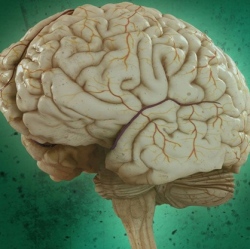
One of the challenges in performing surgery on a brain tumor is the need to avoid damage to blood vessels, something that can cause bleeding and even prove fatal. These procedures have become safer with advances in brain imaging that allow surgeons to better map out their approach.
They’re now set to become safer again, with the development of a new high-tech biopsy needle that packs a tiny imaging probe inside to help guide the way.
Ever-miniaturizing electronics have given rise to some exciting new possibilities when it comes to medical imaging. In the last year alone we have seen the development of a complex lens system that fits inside a syringe, an optical sensor that fits in the end of an epidural needle for precision guidance, and a camera-loaded catheter that streams live from inside arteries and even removes plaque at the same time.
But the new device developed at Australia’s University of Adelaide represents new territory, in that it has been shown to bring the benefits of these cutting-edge imaging technologies to the brain.
Likened to a tiny flashlight, it consists of a fiber optic camera the size of a human hair. This is encased inside a brain biopsy needle, and the device uses infrared light to scan for blood vessels as it passes through the tissue. Paired with special computer software, the system itself can actually recognize blood vessels and alert the surgeon of any hazards ahead.
Over the last six months, the researchers have used their so-called smart needle in a pilot trial with 12 patients at Sir Charles Gairdner Hospital in Western Australia, and say this is the first time in the world that such a technology has been used on humans. They are now in discussions with medical device manufacturers hoping to commercialize the technology following clinical trials in 2018.
"To have a tool that can see blood vessels as we proceed through the brain would revolutionize neurosurgery," says Professor Christopher Lind, Consultant Neurosurgeon, Sir Charles Gairdner Hospital and the University of Western Australia, who led the clinical trial. "It will open the way for safer surgery, allowing us to do things we’ve not been able to do before."
